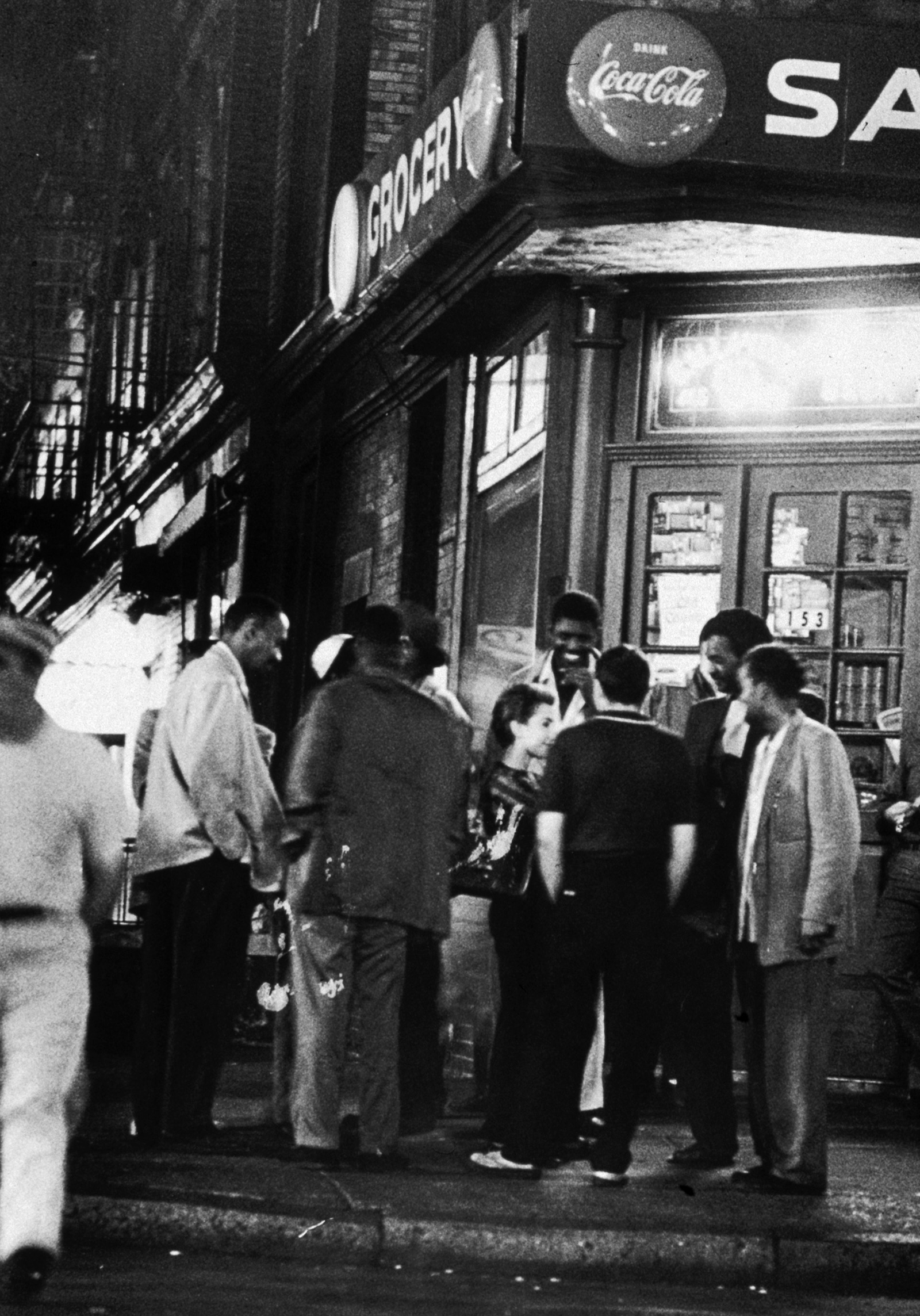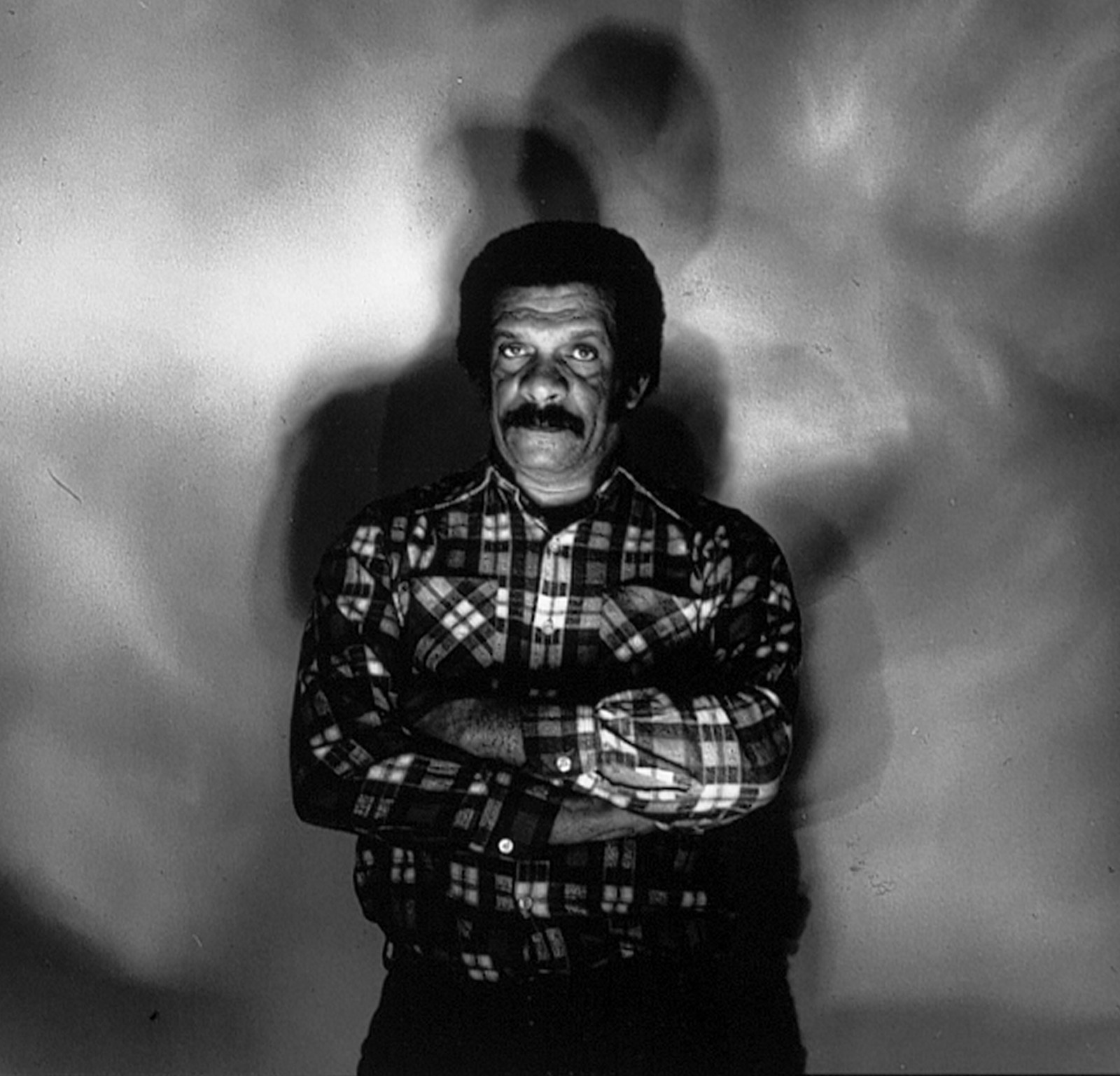Sitting with him in St. Lucia, I once asked Derek Walcott if he missed New York City. He looked up and stared intently, and then, almost imperceptibly, he nodded. The truth is, my question was imprecise and badly formed. I should have asked him if he missed the New York of the Seventies, and his association with Joe Papp and the New York Shakespeare Festival? Or did he miss the New York of the early Eighties, when he was teaching at both NYU and Columbia University? Or did he miss the New York of the Nineties, when he lived in the West Village and found himself flying all over the world as a newly lauded Nobel laureate?
Derek Walcott had many New Yorks, and all of them played a part in his life and in his evolution as a writer. But perhaps the most important of all his New York sojourns was the one from the Fifties, a nine-month period between 1958 and 1959 when Walcott lived in the city as a young man.
Some years earlier, in 1949, a nineteen-year-old Walcott was hawking his first book, 25 Poems, around St. Lucia. In this slim, self-published volume Walcott fused imported hardware with local materials: the metrical hammer of Milton could help him nail down the beauty of a tropical sunrise, and the alliterative saw of Shakespeare might better enable him to fashion a line about the foaming beauty of a wave breaking against a sandy white beach. By the time Walcott was a teenager, he had carefully watched his schoolmasters, who imparted to him a British education that included Latin, unload the canonical freight from London. As the young prodigy surveyed St. Lucia with eyes wide open, he quickly pocketed those tools that might be of use to him.
Early Caribbean poetry often paid homage to English landscape. While staring at Jamaica’s Blue Mountains, or gazing upon a river in the lush tropical heartland of Dominica, one might evoke the Lake District or the lazy meandering of the River Avon. Walcott wanted to do things differently and move beyond mere imitation. His task was fundamental: he would have to first name, and then describe, the uniqueness of the flora and fauna of the Caribbean. Furthermore, in the atmosphere of rising nationalism that was blowing through the region, he would have to be careful not to allow his awareness of social and racial injustice to disrupt his vision and cause his work to be sullied by either anger or ideology. The youthful Walcott knew he had much to learn, but he was determined to stay focused on what he later referred to, in the poem “A Letter from Brooklyn,” as “my sacred duty to the word.”
In October 1958, Derek Walcott began a twelve-month Rockefeller Foundation Fellowship which would pay $250 a month and allow him to study drama in New York. He was particularly keen to immerse himself in the practical elements of theater such as set and lighting design, and theories of acting and directing, all of which he might employ once he returned to the Caribbean. Once again, he was seeking to become familiar with the “hardware” of another tradition, this time the world of the American stage, and take it back to the Caribbean.
He had first visited New York the previous year when, under the auspices of the same foundation, he had made a brief stop in the city en route between Canada and Trinidad. In New York, he sought advice from theater professionals on a play he was hoping to write for the upcoming Caribbean Festival of Arts. During his fleeting visit, though, he realized he didn’t much care for the brash city, finding it loud, impersonal, and somewhat overwhelming. Now, he was back again for a whole year—but his cramped room in a seedy Greenwich Village hotel, with a view of a concrete wall and a shared bathroom down the corridor, didn’t inspire much hope that his second visit would provide him with any reason to revise his negative opinions.
This protracted encounter with the city unfolded as one might expect. Walcott was habitually lonely, and often baffled by the American world. He understood that—aside from the various groups of Native Americans—everything had been imported, and the United States was attempting to make something new and positive out of its troublesome multicultural and multiracial reality. But to his mind, there was a clumsy, and perhaps stupid, logic informing a country that allowed the historical difficulties that marked its conception to suckle so freely at the national breast.
The racial categorizations that prevailed in the US seemed to him crude, and appeared to revolve around little more than guilt, abuse, and rancor. He found himself in the company of writers, painters, photographers, and musicians, and remained open to exchanging ideas, and even manuscripts, but his worldview and—to some American eyes—his pseudo-British demeanor confused many of his fellow artists, both black and white. There were arguments, bar fights, and a mugging.
Advertisement
But what, if anything, did Walcott gain from this generally unhappy spell in the New York of the late Fifties? He attended plays both on and off Broadway, and he participated in workshops run by the famous director José Quintero, whose productions of work by Tennessee Williams, Brendan Behan, and Eugene O’Neill had gained the director worldwide attention. Quintero preferred an acting technique that was based on the Method, and a production style that laid greater emphasis on the static and the symbolic and the psychological, as opposed to more naturalistic, open, free-flowing action. The theater space Walcott liked most was Quintero’s own, the Circle in the Square, where the fourth wall was often broken down and the action would regularly spill out into the audience, who were seated at tables. This fusion of high formality of interpretation and informality of presentation left a decided mark upon the young writer. In New York, Walcott thought long and hard about ways of funding and establishing a theater in the Caribbean. After returning to the familiar landscape in 1959, he founded the Trinidad Theatre Workshop later that same year. But the artistic and practical foundations for it had been laid in New York.
Walcott also tried to write during his time in New York, but it would be some years before he achieved the detachment necessary for him to be able to coherently set down his complex, troubled feelings about the city. In the poem “A Village Life,” he makes clear that it was never easy for him to properly establish a work routine. He was perpetually short of money, fed up with enduring a harsh winter shrouded in a large overcoat, and always homesick. Somewhat ironically, he later remembered “a snowfall of torn poems piling up,/heaped by a rhyming spade,” but little of the poetry he actually wrote in New York ever found its way into print. The Evergreen Review, principal journal of the Beat generation, did publish “A Far Cry from Africa,” an early poem from his days as a student in Jamaica, but conversations with the Village-based Grove Press about bringing out a volume of his work led nowhere.
Perhaps for the first time in his life, he felt adrift as a poet. As he writes in the poem “Greenwich Village, Winter”: “A book is a life, and this/White paper death.” He was at a loss, for it was clear that he didn’t fit into the American arts scene—neither the supposed high culture of book publishing, nor the low-down Beat alternative.
In the New York of the Fifties, there was, as yet, no discernible “black scene” in the arts, although Walcott’s own identity as a hybrid, creolized West Indian and his determination not to stoop to reductive notions of race would have quickly placed him outside the cultural nationalism that did develop. In New York, by learning what he wasn’t, Walcott quickly absorbed the lesson of what he was: a West Indian.
Furthermore, by mixing in the circles to which the fellowship and his charisma gave him access, he was also able to confirm to himself that he was indeed an artist, albeit a semi-invisible one. Walcott was a West Indian artist, and if those around him during his Greenwich Village stopover couldn’t yet recognize what this was, they were simply taking their lead from a United States of America that had no real notion of the Caribbean beyond the “Daylight Come” refrain of Harry Belafonte’s 1956 hit “Day-O.”
In the years to come, New York and the United States would eventually recognize and embrace Derek Walcott. The disappointment of this early encounter with New York would be replaced by a fuller and more satisfactory relationship with the city. As his career unfolded, he would come to be regarded as a member of three distinct groups of writers. First, and most importantly, he was viewed as leading exponent of twentieth-century Caribbean literature (whether written in English, French, Dutch, or Spanish). This Antillean literature of Jean Rhys, Aimé Césaire, Sam Selvon, Édouard Glissant, Saint-John Perse, Gabriel García Márquez, and others has written back to the classical world of Europe, frequently thumbing its nose at the post-Columbian vulgarities of caste and color.
Walcott was also recognized as a member of a second, remarkable group of “colonial” writers, who were educated to rise and inevitably bang their heads against the galvanized tin roof of British imperial authority and then recoil and dress their wounds with the eagerly proffered gauze of mediocrity. But Chinua Achebe, V.S. Naipaul, Wole Soyinka, Kamau Brathwaite, Ngũgĩ wa Thiong’o, and Derek Walcott were witnesses who articulated the perilous spectacle of the Union Jack slithering down the political pole, and they were alive to the many problems that were now visible in this newly created national—dare one say, postcolonial—space.
Advertisement
Finally, Derek Walcott was seen as a provincial artist who had voyaged to America’s great metropolis and found companionship with like-minded provincial voyagers—most notably, Joseph Brodsky, Czesław Miłosz, and Seamus Heaney, all of whom drew deeply on the rich oxygen of the chaotic nation that is the United States, though all of whom also knew that the brash republic was never going to be the soil that would ultimately receive them.
On June 12, 1959, Walcott asked the Rockefeller Foundation to end his fellowship three months before its natural term. In July, Derek’s brother, Roderick, would take six one-act plays by them both to Trinidad, under the auspices of the St. Lucia Arts Guild. Already, much was expected of Derek Walcott: his plays were being performed, his writing was being published, and his future was discussed with great interest. For his part, he was convinced that it was possible in the Caribbean to be released from the punishing straitjacket of both the British and, to an extent, the American traditions. He would continue to acknowledge and make use of work that had influenced him, but he knew that he must thenceforth fix his gaze on the creative forces around him unleashed by the Caribbean confluence of so many races, religions, and cultures.
Melded into his vision was a deep respect for the shadowy penumbra of illegitimacy, and he maintained a profound distrust of any notion of purity. He cherished the recurring cycle of unexpected Caribbean fusions—the Indian with the African, the Chinese with the Jew, the Hindu with the Christian—and the dignity of this mongrel reality distinguished his world. The Rockefeller Foundation could keep the remaining three months of their money. On June 20, 1959, Walcott left a steamy, hot New York City and returned to St. Lucia. It was over. He was going home.




